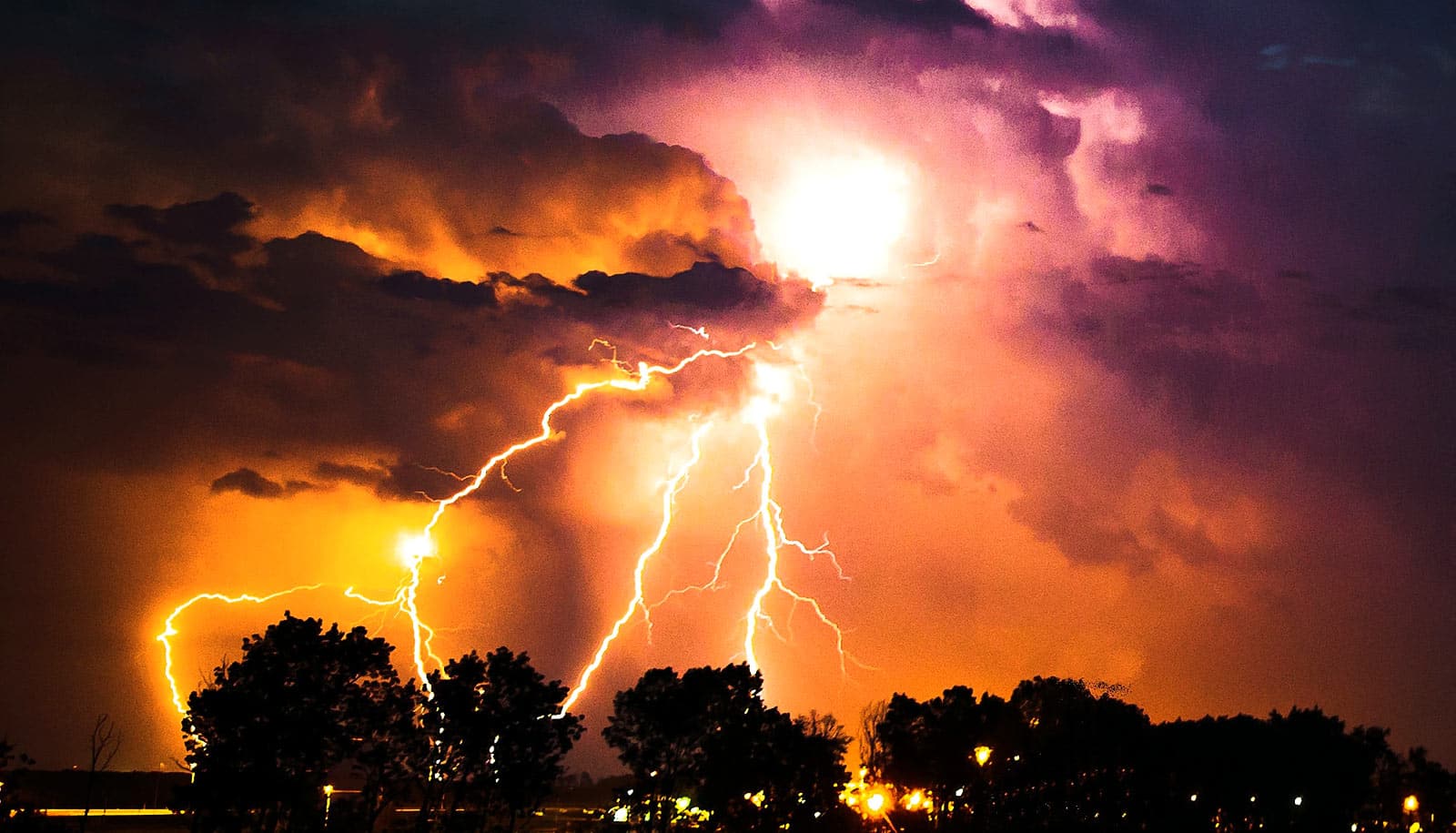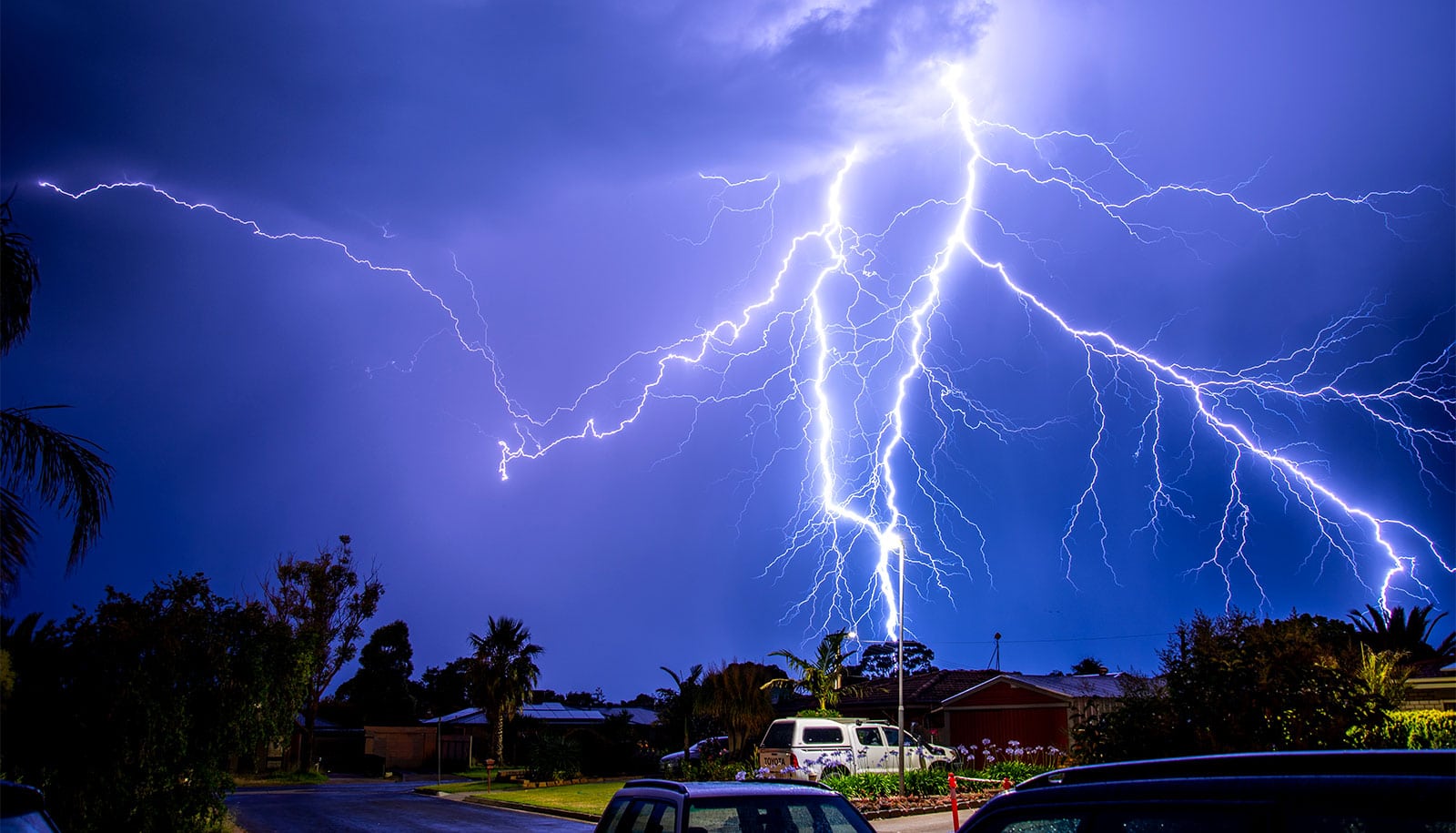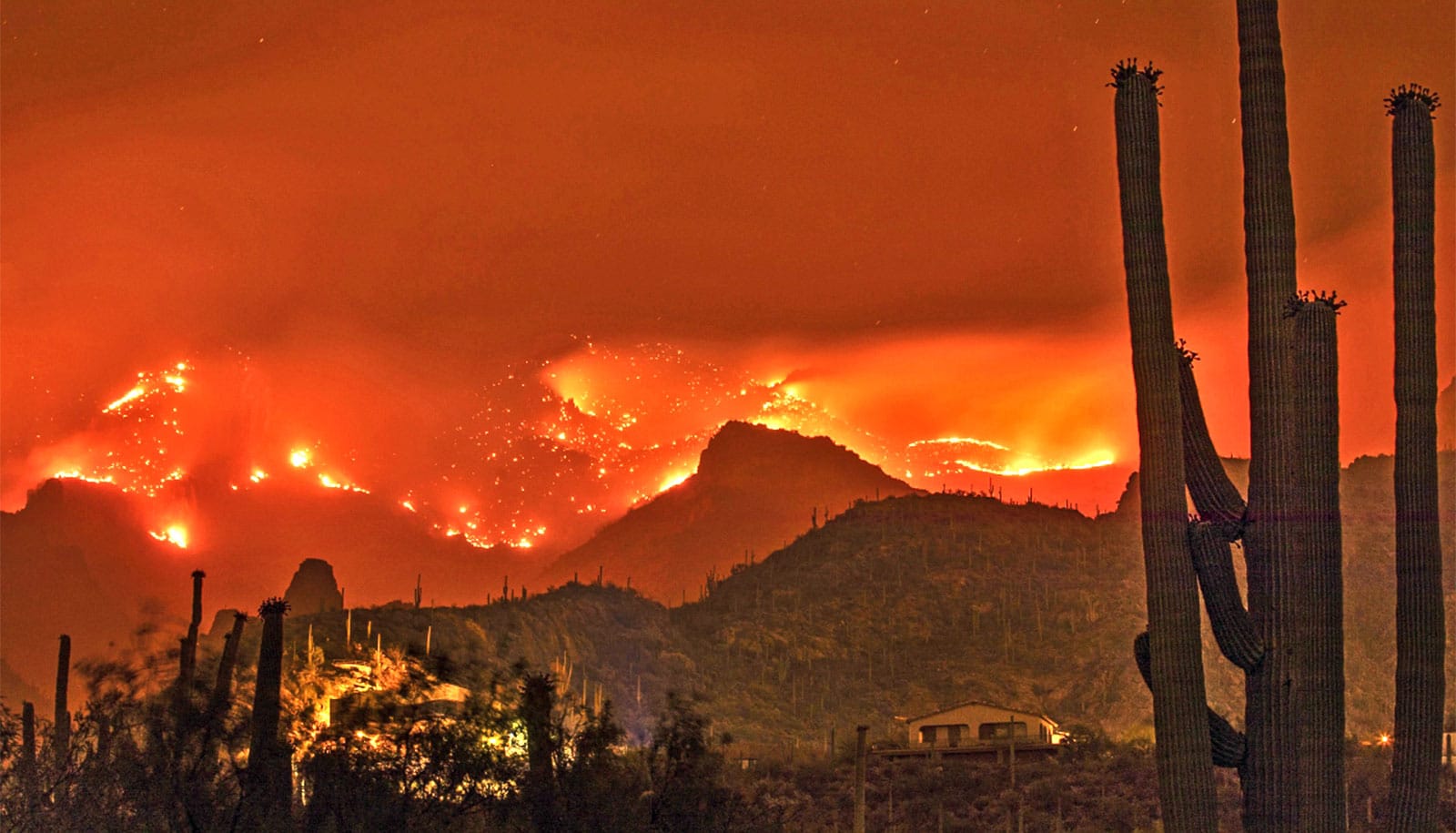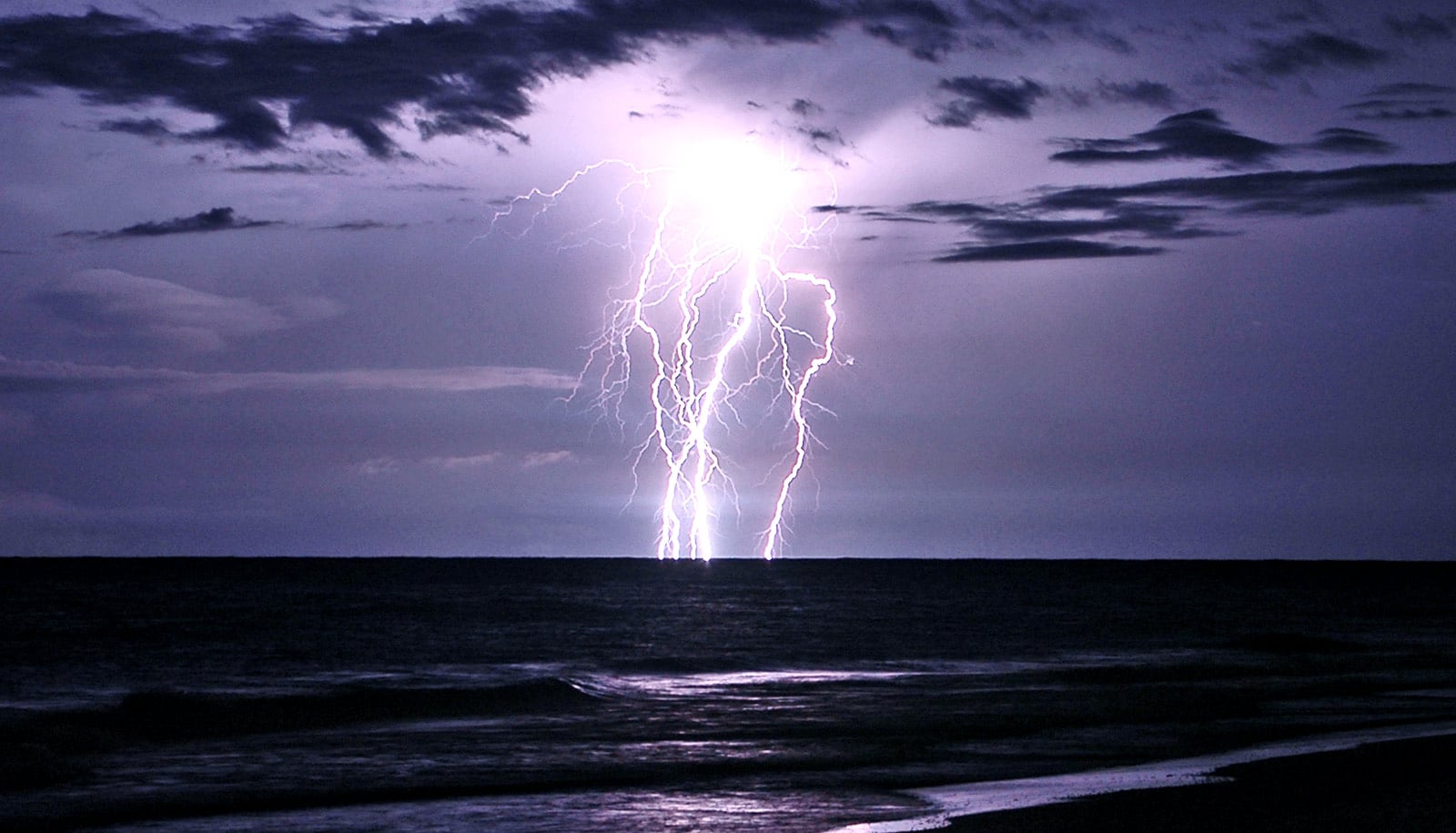Dry lightning outbreaks are the leading cause of some of the largest wildfire outbreaks in modern California history, a new study shows.
Despite this, dry lightning has remained largely understudied across this region—until now.
Researchers developed the first long-term climatology of dry lightning—lightning which occurs with less than 2.5mm of rainfall—in central and northern California. The study is published in the journal Environmental Research: Climate.
“Wildfires are a growing threat in California as the climate continues to warm. Unlike human-caused fires that originate in a single location, lightning outbreaks can strike multiple locations and start numerous simultaneous wildfires, creating a substantial challenge for fire response,” says lead author Dmitri Kalashnikov, a doctoral student at Washington State University.
“This happened recently in 2020 when multiple lightning-caused fires burned nearly one million hectares across this region, and other prominent widespread lightning-caused wildfire outbreaks also occurred in 1987 and 2008.”
The team used daily lightning counts from the National Lightning Detection Network and precipitation observations from 1987–2020 in combination with atmospheric reanalyses to characterize the climatology of dry lightning and the associated meteorological conditions during the warm season (May to October) when wildfire risk is highest.
They found that moisture and instability high in the atmosphere—high above a hot, dry, lower atmosphere—were key drivers of dry lightning across all regions in central and northern California and that widespread dry lightning outbreaks can occur anytime between May to October, even in “quiet” years for lightning activity.
Through categorizing the widespread dry lightning days, they were able to identify four distinct large-scale atmospheric patterns associated with the outbreaks that feature different configurations of weather systems.
Moreover, they found that nearly half (46%) of lightning that struck the ground in this time period was under dry lighting conditions. While dry lightning was more likely to occur at higher elevations (>2000m) with activity more concentrated in July to August, this pattern reverses from summer to autumn and lower elevations are struck more frequently in September to October. During this time of the year, natural fuels are drier which is critical to wildfire outbreaks, therefore, increasing the risk.
“Understanding the meteorology of dry lightning across this region can inform forecasting of possible wildfire ignitions, helping to better constrain future risk of wildfire ignition in California and can aid fire suppression efforts, as firefighting resources can be strategically pre-positioned in at-risk areas,” says coauthor Deepti Singh.
Source: Washington State University



